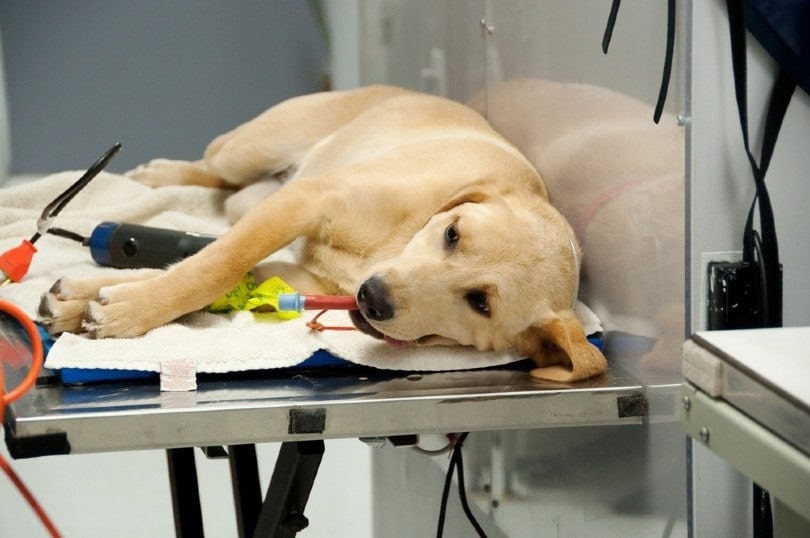Whether your dog’s suffering from a bee sting or healing from surgery, injuries will be a part of their life. If you’re lucky, those aches and pains will be minor.
But when your dog is in pain, what does that mean? Does getting a cut or a scrape hurt just as much for a canine friend as it would for you? The short answer is that as far as we can tell, there’s not much difference. Dogs feel pain to a similar degree that humans do, but they might not react in the same way.
How Strongly Do Dogs Feel Pain?
These questions were a subject of debate for a long time. Even though dogs clearly respond to injuries, many vets and researchers once thought that it was instincts, not perception, that controlled pain. It was even common to send dogs home from surgery without painkillers.
But as we got a better idea of animal intelligence and a better understanding of how pain worked, those ideas met with more challenges. Newer research shows that dogs’ brains and nervous systems work the same way as ours do when it comes to pain.
More research also helped us to realize some of the ways dogs react to pain that we didn’t know about before. We don’t know exactly what it’s like in a dog’s brain, but when it comes to pain, the case is closed. It’s pretty much exactly the same.

Pain Concealment Instincts
One of the big roadblocks to understanding pain in dogs is that they don’t always react the way that we’d expect. In general, humans are pretty open about pain. If you get a bruise or a cut, there’s no need to hide it. But for dogs and their ancestors, hiding pain was often the smart choice. Being able to function through strong pain was important, and so was hiding signs of weakness. Dogs today still have the drive to hide injuries and pretend they aren’t in pain.
Signs of Pain in Dogs
With that in mind, it’s worth being able to recognize when your furry friend is in pain. Some dogs show that they’re pain without much trouble, but others can be more stoic. But most dogs have tells. They might become more aggressive or antsy. On the other hand, many dogs become withdrawn. They might avoid physical touch or hide in a small space.
Look for changes in your dog’s movement, such as new stiffness or a shift in gait. Widened pupils, panting, increased or decreased grooming, and excessive sleeping are also possibilities. If you suspect your dog is in pain, consider a vet trip to see if there’s anything causing it.
Conclusion
Dealing with pain is hard, and it’s not easy to see a beloved pet struggle. But the good news is that now we know a lot about how dogs communicate pain and how to help. Better vet care and new research have made pain management much easier than it used to be, so your dog doesn’t have to be in pain forever.
- Related Read: Why Chocolate Is Toxic to Dogs: Our Vet Explains
Featured Image Credit: Blanscape, Shutterstock













